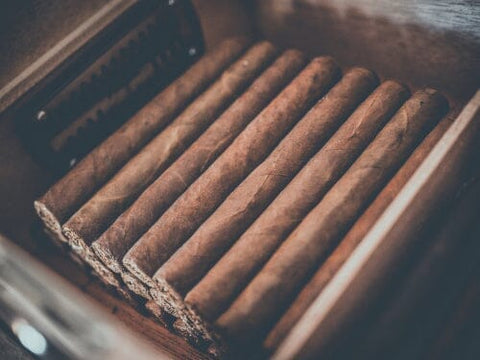Fact or Fiction: Can a Cigar Change Colors?

Cigars are rolls of fermented tobacco leaves that’re intended to be smoked. They come in various sizes and shapes, often distinguished by their length, diameter, and the type of tobacco used. The process of making a cigar involves harvesting the tobacco leaves, curing them, fermenting them, and then aging them to develop flavor. After aging, the leaves are rolled into cigars by hand or machine. Cigars can vary widely in taste and quality, with premium cigars often being hand-rolled and using higher-quality tobacco.
But, what about the color in terms of it actually changing? Can a cigar’s color actually change and if so, what does this mean?
How to Generally Notice a Change in Your Cigars
Before we cover whether or not a cigar’s color can change, we need to discuss how to notice other changes in your stogie. Here's how you can do it:
- Visual Inspection: Before lighting, examine the cigar for any changes in the wrapper's color or texture. Look for spots, discoloration, or cracks that may indicate a change in humidity or a flaw in storage.
- Touch: Feel the cigar between your fingers. It should be firm with a slight give. If it's too hard, it might be over-humidified, and if it's too soft, it may be under-humidified.
- Smell: Smell the cigar before lighting it. The aroma should be rich and pleasing. Any off-odors could suggest mold, over-humidification, or contamination.
- Taste: As you smoke, pay attention to the flavor profile. If the cigar suddenly becomes bitter, harsh, or loses its complexity, this could indicate a problem with the tobacco blend or storage conditions.
- Smoke Output: A change in the amount of smoke can indicate an issue with the cigar's construction or the humidity level at which it was stored.
- Burn Line: A cigar should burn evenly. If you notice canoeing (where one side burns faster than the other) or tunneling (where the inside burns faster than the wrapper), this can be a sign of construction issues or improper lighting.
- Draw: If the draw becomes too tight or too loose, this could be due to changes in the cigar's construction or storage conditions.
- Consistency: If you're familiar with a particular cigar and it suddenly seems different, trust your palate and experience. Changes in the blend, production, or storage can all affect the consistency of a cigar.
Regularly enjoying cigars will refine your ability to detect subtle changes, and maintaining proper storage conditions will help ensure your cigars remain consistent in quality.
Can Cigars Actually Change Color Then?
Cigars themselves don't change colors in the way some materials like mood rings do. However, there can be some variation in the color of the wrapper leaves that are used, which may give the impression of a color change.
For example, the same type of tobacco leaf can appear in different shades such as:
- Claro: Light tan or yellowish due to being grown under shade and often resulting from a quick fermentation process.
- Colorado: A reddish-brown hue that indicates a longer aging process and often a richer flavor.
- Maduro: Dark brown to black, these wrappers have undergone a long fermentation process, which can sometimes give the leaves a somewhat oily appearance.
So, cigars can appear to change color over time for various reasons.
Reason #1: Ageing
As cigars age, they can undergo subtle changes in color. This is often due to the oils in the tobacco leaves migrating to the surface or reacting with the air, which can darken or lighten the wrapper leaf slightly.
Reason #2: Humidity and Storage
Cigars can also change color if they are not stored properly. High humidity can lead to mold, which can discolor a cigar. On the other hand, too little humidity can cause the cigar to dry out, possibly leading to a lighter appearance.
Reason #3: Sunlight
Prolonged exposure to sunlight can bleach the color of the cigar wrapper, leading to a significant color change over time.
Reason #4: Oil Development
Some cigars develop what is known as 'bloom' or 'plume', which is a crystallization of the natural sugars and oils on the surface of the cigar that can give it a whitish hue.
Final Cigar Color Changing Thoughts
So, while a cigar doesn't actively change colors like the leaves of autumn do, it can appear different over time due to environmental factors and natural processes within the tobacco. Essentially, the color of the cigar's wrapper leaf can vary significantly depending on the type of tobacco plant, where it's grown, and how it's processed and aged. Keep in mind, these changes are generally subtle and slow, not like the dramatic color changes you might see in other natural products.← Older Post Newer Post →
